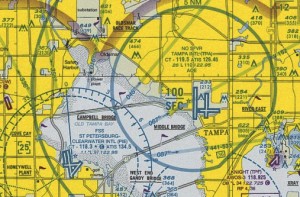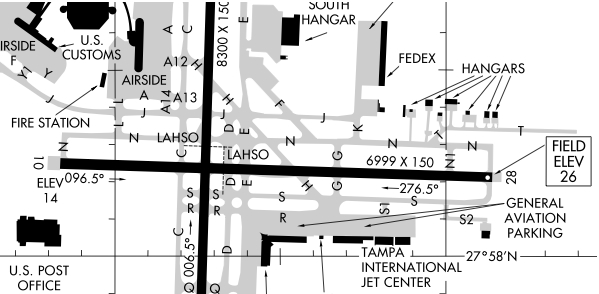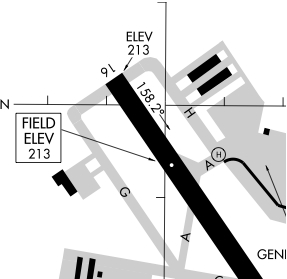One of our readers asks “What Is The Field Elevation printed on Airport Diagram and why is it important?”
 The Field Elevation on the Airport Diagram references the Airport Elevation. The Federal Aviation Administration(FAA) defines the Airport Elevation as the highest point of an airport’s usable runways and is measured in height above mean sea level. Much of aviation symbology and regulations have changed to match the standards set forth by the International Civil Aviation Organization (ICAO). Therefore on VFR charts you will also see the definition of airport elevation as the highest point on the usable portion of the landing areas.
The Field Elevation on the Airport Diagram references the Airport Elevation. The Federal Aviation Administration(FAA) defines the Airport Elevation as the highest point of an airport’s usable runways and is measured in height above mean sea level. Much of aviation symbology and regulations have changed to match the standards set forth by the International Civil Aviation Organization (ICAO). Therefore on VFR charts you will also see the definition of airport elevation as the highest point on the usable portion of the landing areas.
Why the importance of airport elevation?
To provide for terrain clearance and compliance with speed restrictions you will need to know the field elevation. For example the maximum speed allowed within 4 nautical miles or five statute miles of the primary airport of class C airspace is two hundred knots up to two thousand five hundred feet above the primary airport elevation. So if you want to fly fast over the primary airport in Class C airspace you must know the airport elevation to avoid a speeding ticket, translated a violation. Another reason you must know the hight above the airport elevation is to comply with minimum visibility requirements. So as you can see knowing the airport elevation is important.
Examples:

View the excerpt of the airport diagram for Tampa International Airport depicted above. The box at the end of runway with the notation “Field Elevation 26” This depicts the highest point on the runway which also coincides with the Touch Down Zone Elevation (TDZE) runway 28. If you look at runway 10 there is a depiction ELEV 14 which is the Runway End or Touchdown Zone Elevation of runway 10. The Touchdown Zone Elevation is the highest elevation in the first 3,000 feet of the landing surface.
The field elevation is not always located at the end of the runway. Look at the airport diagram for Trenton airport depicted below. The field elevation is depicted at the intersection of taxiway A and runway 16. Since this is within 3,000 feet of the end of the runway, the touchdown zone elevation is the same as the field elevation which is 213.

Many of us enjoy flying out of grass strips and know that many have large dips and rises in the runway. If you look at an airport with a grass runway the airport elevation is the highest point of all these dips and rises in the runway. No offense to owners of level grass strips. I really appreciate you.
Conclusion:
Airport Elevation figure depicted on the airport diagram is the same as depicted on the sectional and instrument charts. The airport elevation is based on a specific point along the usable portion f the landing area. Most of us only view the field elevation and its impacts on us as pilots during and oral exam for a rating or a job. The practical use of this figure is for complying with speed and visibility restrictions at airports.

Comments on this entry are closed.
Can you please send me another reason hy elevatipon of aerodrome is important 🙂
Another reason: to comply with 1,000′ stabilized approach: you need to know either airport or TDZE elevation in order to know what to see on your altimeter when you expect to be stabilized.